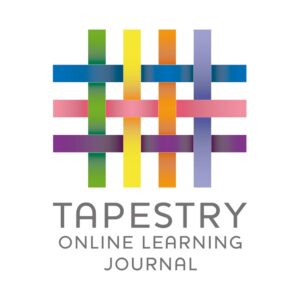
To support your child’s learning there are several resources that we use in school that are useful to have access to at home, either for when your child is off sick or during the holidays:
Home (languageangels.com)
There is a school login in for this (Ping)
Times Tables Rock Stars – Times Tables Rock Stars (ttrockstars.com)
You will be given your own login (Ping)
Great websites for learning at home:
PhonicsPlay
Cool Math Games – Free Online Math Games, Cool Puzzles, and More
Home – BBC Bitesize
We occasionally use Microsoft TEAMS for home learning or Parent’s Evenings. If required, you will be given a user name and password for this (Ping)
For all Reception starters, this is a great website:
Starting primary school – BBC Bitesize
Adventurous Eating | Making Kids Excited About Fruit & Veg | Teach Your Monster
Remote education provision: information for parents
This information is intended to provide clarity and transparency to pupils and parents or carers about what to expect from remote education where national or local restrictions require entire cohorts (or bubbles) to remain at home.
For details of what to expect where individual pupils are self-isolating, please see the final section of this page.
The remote curriculum: what is taught to pupils at home
The children will get a curriculum that is as close to our full curriculum offer as possible, with a stronger emphasis on English and Maths as the top priorities, recognising that some other curriculum areas may not get as much focus in the remote curriculum.
What should my child expect from immediate remote education in the first day or two of pupils being sent home?
Children sent home will immediately be able to access the remote curriculum through Microsoft Teams (and Tapestry for Year R/1), and emails to parents from their class teachers.
Following the first few days of remote education, will my child be taught broadly the same curriculum as they would if they were in school?
- We teach the same curriculum remotely as we do in school wherever possible and appropriate. However, we have needed to make some adaptations in some subjects. For example, Music, PE or Art will vary from the school curriculum due to the lack of specific resources and facilities in the home environment.
Remote teaching and study time each day. How long can I expect work set by the school to take my child each day?
We expect that remote education (including remote teaching and independent work) will take pupils broadly the following number of hours each day:
| Key Stage 1 | Expect to spend a minimum of 3 hours per day on school work and a maximum of 4.5 hours. |
| Key Stage 2 | Expect to spend a minimum of 4 hours per day on school work and a maximum of 5.5 hours. |
Accessing remote education. How will my child access any online remote education you are providing?
Teachers will send emails to parents.
Access through Microsoft Teams for all classes
Tapestry for Reception and Year 1.

If my child does not have digital or online access at home, how will you support them to access remote education?
We recognise that some pupils may not have suitable online access at home. We take the following approaches to support those pupils to access remote education:
- We will lend laptops or tablets to pupils as much as we can with the resources we have available. Please contact the class teacher or headteacher if you need a laptop or tablet.
- Marnhull village support network is also providing some I pads / laptops for our pupils where required
- Pupils can access printed materials needed, this is arranged through the class teacher – this can be delivered on a Monday by Mrs Field.
- All work completed on paper at home will be collected in by the teacher at the end of each half term. Books for children to work in will be provided to parents
- Reading books can be collected by arrangement with the class teacher to their designated pick up points
How will my child be taught remotely?
We use a combination of the following approaches to teach pupils remotely:
- Live teaching (online lessons).
- Recorded teaching – for example The Oak Academy
- Recorded lessons by individual class teachers
- Powerpoints
- Activities and worksheets set by the teachers, for completion on paper or in Teams workbooks.
- Commercially available websites supporting the teaching of specific subjects or areas, including video clips or sequences.
- Long-term project work and/or internet research activities
- Lots of ideas and activities to get children outside and away from screens, particularly during afternoon sessions.
Engagement and feedback
What are your expectations for my child’s engagement and the support that we as parents and carers should provide at home?
- We expect all children and families to engage with remote learning every day.
- We expect feedback from children and/or families at once a week or more, to show what they have been doing at home.
- We expect all children to join the Live Learning sessions, where possible
How will you check whether my child is engaging with their work and how will I be informed if there are concerns?
- Teachers keep a record of the engagement of the children in their class, attendance at Live Learning and completion of tasks set.
- Teachers will use Insights on Teams to check engagement and time spent on tasks
- If a teacher hasn’t heard from a parent or child at least twice in a week, they will make contact to find out the reason. If no reasonable response is received, the teacher will inform the SLT.
- A member of the SLT will contact parents or carers where insufficient evidence of engagement and work has been seen by the teacher. A discussion will take place about how to resolve the issues, this could be to provide paper copies of work set, provide a laptop or tablet, or bring the child in to school for some days each week if the family are assessed to be vulnerable.
How will you assess my child’s work and progress?
Feedback can take many forms and may not always mean extensive written comments for individual children. For example, whole-class feedback or quizzes marked automatically via digital platforms are also valid and effective methods, amongst many others. Our approach to feeding back on pupil work is as follows:
- Feedback by staff will vary according to the task set. Some tasks will be sent with mark sheets, others will be automatically marked online.
- Teachers will give feedback to children through emails home, comments on Teams and overall marking of paper work at the end of a half term. This will be a general feedback rather than specific marking of each piece due to the workload that this will produce for the teacher.
Additional support for pupils with particular needs
How will you work with me to help my child who needs additional support from adults at home to access remote education?
We recognise that some pupils, for example some pupils with special educational needs and disabilities (SEND), may not be able to access remote education without support from adults at home. We acknowledge the difficulties this may place on families, and we will work with parents and carers to support those pupils in the following ways:
- Our SENDCO will coordinate the delivery of remote education for pupils with SEND. Additional weekly check-ups are made for children with EHCPs who are working at home.
- Interventions for children with particular needs are arranged by the SENDCO and delivered by teachers and teaching assistants known to the child.
Remote education for self-isolating pupils
If my child is not in school because they are self-isolating, how will their remote education differ from the approaches described above?
If the whole class are in school, but a child needs to self-isolate, we will continue with the same provision that we use for a full class lockdown.


